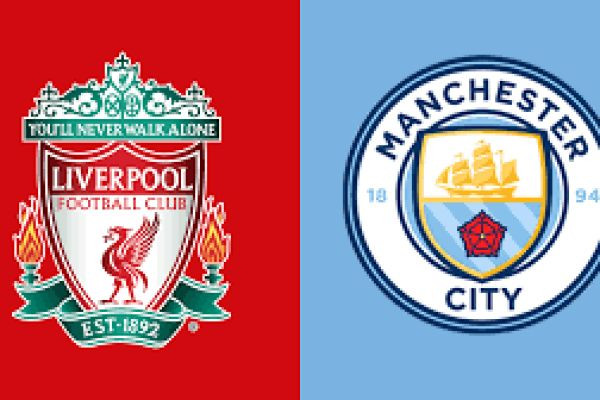The match between Manchester City FC and Liverpool FC transcends a simple league fixture; it is a battle for the soul of modern English football. This rivalry is defined by the unique, contrasting, and equally successful philosophies of Pep Guardiola and Jürgen Klopp. It pits City's structured, suffocating possession against Liverpool's high-tempo, vertical chaos, with the winner often staking a claim on the season's ultimate prizes.
Manchester City: The Positional Control Machine
Pep Guardiola's tactical identity is centered on total positional control and the elimination of unforced transitions. City typically utilizes a fluid formation that morphs into a $3-2-5$ shape in possession, designed to pin opponents deep and create numerical superiorities across the pitch.
City’s Strategic Pillars:
The Box Midfield (The $3-2$ Build-up): The key is the inverted full-back strategy (often using players like John Stones or Manuel Akanji) tucking into the central midfield alongside Rodri. This creates a $3$-man backline and a $2$-man central pivot, ensuring complete ball security and allowing the wingers and advanced midfielders (like Bernardo Silva or Kevin De Bruyne) to commit forward.
Haaland as the Focal Point: The introduction of Erling Haaland provides a vertical threat previously absent. His role is to stretch Liverpool's high defensive line and provide an elite finishing presence for the intricate cutbacks and through-balls generated by the midfield playmakers.
The Counter-Press: Like all Guardiola sides, City’s best defense is the immediate counter-press. They swarm the ball upon loss to win it back in the final third, ensuring Liverpool never gets the opportunity to launch a structured counter-attack against their advanced defensive line.
The Vulnerability: City’s reliance on short, intricate passing can be exposed by Liverpool’s aggressive press. A single turnover in the build-up phase leaves Rodri and the center-backs exposed to Liverpool's rapid, direct attackers.
Liverpool FC: Gegenpressing and Vertical Chaos
Liverpool’s strategy under Jürgen Klopp, the famed Gegenpressing philosophy, is fundamentally designed to disrupt systems like City's. Their fluid $4-3-3$ is built on athleticism, speed, and aggressive recovery of the ball in advanced areas.
Liverpool’s Strategic Mandate:
Full-Back Creation (The $2-3-5$ Attack): Liverpool's primary creative outlets are the full-backs, particularly Trent Alexander-Arnold, who often operates as a hybrid right-back/midfield playmaker. Their high positioning provides the width, allowing the wingers to cut inside and the central midfielders to focus on pressing and second balls.
The Midfield Transition: The midfield trio (often featuring intense runners like Dominik Szoboszlai) is tasked with two roles: winning the ball back immediately when City loses it, and quickly supplying vertical passes to the forwards, bypassing the slow build-up that City relies on.
High Defensive Line: Liverpool famously maintains a high line, using it as an offensive weapon to compress the pitch and enable the press. This commitment is a double-edged sword, necessary for the press but extremely risky against Haaland.
The Weakness: The high line is precisely what City targets. If City bypasses the initial press—or if Liverpool's defensive screen is weak—Haaland’s pace can exploit the vast space between the center-backs and Alisson Becker.
Key Decisive Tactical Conflicts
The outcome of this colossal fixture will hinge on three specific tactical duels:
The Rodri Screen: Can Liverpool’s attacking midfielders successfully isolate and press Rodri? Rodri is the lynchpin of City’s control; if he is harassed and forced into errors, City’s entire structure destabilizes, handing Liverpool the chance to score through quick turnovers.
Wing-Back Risk vs. Reward: Can Liverpool’s full-backs attack aggressively without conceding fatal space to City's wide attackers? If Alexander-Arnold pushes high, the space he leaves is a prime target for City's inverted wingers (like Phil Foden) and is often the site of City's most dangerous attacks.
Haaland vs. Van Dijk: The ultimate individual matchup. Virgil van Dijk's positioning and speed are critical. If he can contain Haaland with minimal help, Liverpool can keep its high line and maintain the press. If Haaland is consistently allowed to run in behind, Liverpool will be forced to drop deeper, conceding midfield control to City.
Cultural Context and Conclusion
This is a rivalry defined by technical excellence and intense competition, not geographical animosity. It is a duel between the two most influential managers of their generation, each demanding perfection from their players. The game is never decided by a single factor, but by which team executes its core philosophy for the longest period. Expect a match of high-intensity swings and technical brilliance. The final result is usually a narrow victory or an exciting, high-scoring draw, decided by the technical execution of a single player or the ruthless exploitation of a momentary lapse in concentration.








